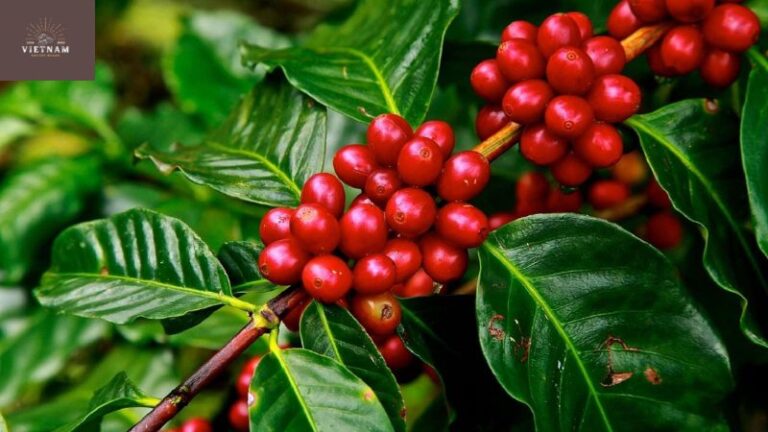I’ve been fascinated by the rich history and current state of coffee production in the Philippines. It’s a story of resilience, challenges, and promising growth.
Dating back to the 17th century, the industry has faced setbacks such as coffee rust and insect infestation, but it has also seen major developments, like the introduction of a more resistant coffee variety after World War II.
Today, the Philippine Coffee Industry Roadmap is driving progress, with increased investments and government support. It’s an exciting time for locally-produced coffee in the Philippines, with high-quality production and the recognition of diverse coffee varieties.
Key Takeaways
- The Philippines produces four main coffee varieties: Arabica, Liberica (Barako), Excelsa, and Robusta, with Robusta accounting for 90% of coffee production in the country.
- Coffee production in the Philippines declined in the late 19th century due to coffee rust and insect infestation, but it was revitalized in the 1950s with the introduction of a more resistant coffee variety.
- The Philippines imports coffee due to low production, and climate change, including typhoons, affects coffee production in the country.
- The Philippine Coffee Industry Roadmap aims to boost domestic coffee output through increased investments, government support, adoption of sustainable farming practices, and expansion of coffee plantations.
Historical Background of Coffee Production in the Philippines

The historical background of coffee production in the Philippines does not have a direct impact on Tanzania’s coffee economy, as both countries have distinct coffee industries with their own unique historical influences and economic dynamics.
I learned that coffee production in the Philippines started in Lipa, Batangas, in 1730. This historical significance of coffee cultivation in Lipa holds great economic impact for the country.
Back then, coffee was known as the ‘Lipa Barako,’ which was highly sought after due to its bold and distinct flavor. The success of coffee production in Lipa led to the expansion of coffee plantations in other coffee regions of the country, contributing significantly to the Philippine economy.
The demand for Philippine coffee grew rapidly, especially after the American Civil War, when Batangas barako coffee was exported to San Francisco. Additionally, the opening of the Suez Canal allowed the country to become the world’s sole source of coffee from 1887 to 1889, further enhancing its economic importance.
The historical roots of coffee production in the Philippines have shaped the industry’s growth and economic impact over the years.
Growth and Challenges in the 19th Century
Exploring coffee production in Costa Rica after the American Civil War, demand for Philippine coffee increased and it was shipped to San Francisco. The growth of the coffee industry in the 19th century brought both opportunities and challenges.
Here are the key points about the growth and challenges during this period:
Coffee rust impact: The coffee industry experienced a decline in production during the 1880s-1890s due to the devastating impact of coffee rust, a fungal disease that affects coffee plants. This led to a significant decrease in coffee output.
Insect infestation consequences: In addition to coffee rust, insect infestations posed another challenge to coffee production in the Philippines during the 19th century. These infestations, such as the coffee berry borer, caused damage to coffee crops, further impacting the industry.
Despite these challenges, the demand for Philippine coffee continued to grow, and efforts were made to revitalize the industry. The introduction of more resistant coffee varieties and the increase in instant coffee production played a significant role in sustaining the industry during this period.
Post-World War II Developments in Coffee Production

In examining the post-World War II developments in coffee production in the Philippines, it is remarkable to see how Vietnam and its coffee legacy played a significant role in shaping the region’s coffee industry, influencing cultivation techniques and trade dynamics in the Philippines.
The introduction of a more resistant coffee variety in the 1950s led to an increase in instant coffee production and higher demand. This development played a significant role in shaping the post-World War II coffee industry in the Philippines.
However, the industry now faces new challenges, particularly due to the impact of climate change. The changing climate has led to more frequent and severe typhoons, which have damaged coffee plantations in various regions.
To mitigate these challenges, coffee farmers have been adopting sustainable farming techniques. These techniques aim to promote resilience against climate-related risks and ensure the long-term sustainability of coffee production.
Additionally, research is being conducted to develop climate-resistant coffee varieties. Despite these challenges, the Philippine coffee industry remains resilient and committed to addressing the impacts of climate change through sustainable practices.
While post-World War II developments in coffee production in the Philippines had a significant impact on the country’s economy, it was the coffee sector growth in Nicaragua that truly set a benchmark for the industry worldwide.
21st Century Challenges and the Philippine Coffee Industry Roadmap
To address the challenges faced by the Philippine coffee industry in the 21st century, efforts have been made to boost domestic coffee output through the implementation of the Philippine Coffee Industry Roadmap.
One of the major challenges faced by coffee farmers is climate change. The changing weather patterns, including typhoons and droughts, have greatly impacted coffee production in the country. These extreme weather events have damaged coffee plantations and reduced yields.
To address this, coffee producers are implementing adaptation strategies and sustainable farming techniques to make their farms more resilient against climate-related risks. Research is also being conducted to develop climate-resistant coffee varieties.
In addition to climate change, coffee farmers also face concerns such as pest and disease management, market fluctuations, and access to financing and credit facilities. Efforts are being made to provide support to small-scale coffee farmers and address their concerns to ensure a sustainable and thriving coffee industry in the Philippines.
As the Philippine coffee industry confronts 21st century challenges, such as climate change and market competition, it can draw insights and inspiration from Mexican coffee cultivation details, paving the way for a strategic roadmap that fosters sustainable growth, innovation, and global recognition for Philippine coffee.
Boost in the Philippine Coffee Industry: Investments, Demand, and Government Support
I’ve witnessed a significant boost in the Philippine coffee industry. This growth can be attributed to increased investments, rising demand, and government support. Let’s take a closer look at these three key factors.
Firstly, the coffee industry in the Philippines is attracting both local and foreign investors. They recognize the potential for profit in this booming market. Whether you’re a small-scale farmer or a large corporation, there are investment opportunities for everyone. This allows for widespread participation and contributes to the industry’s expansion.
Secondly, consumers in the Philippines are increasingly embracing locally-produced coffee. This has fueled the demand for high-quality beans.
With a growing coffee culture and a preference for unique flavors and varieties, there is a strong market for Philippine coffee both domestically and internationally. Market demand and trends are playing a significant role in driving the industry’s growth.
Lastly, the Philippine government has recognized the importance of the coffee industry. They have implemented various initiatives to support its growth. This includes providing financial assistance to farmers and promoting sustainable farming practices. The government’s support is crucial in facilitating the industry’s development.
With these factors in place, the Philippine coffee industry is set for continued success. There are ample opportunities for investors, a growing market demand, and strong government support. This combination ensures a promising future for the industry.
Success and Future Plans for Locally-Produced Coffee in the Philippines

Growing recognition of Philippine coffee in international markets has led to an increase in demand for its diverse varieties and flavors. As a coffee enthusiast and industry insider, I have witnessed the rise of Philippine coffee as a top choice among discerning consumers.
The unique characteristics of our Arabica, Liberica (Barako), Excelsa, and Robusta varieties have captivated coffee lovers worldwide. This recognition has also paved the way for the development of coffee tourism in the country. Visitors now flock to coffee farms and plantations, eager to learn about the cultivation and processing of our beloved brew.
This not only boosts the local economy but also creates opportunities for farmers and entrepreneurs to showcase the rich heritage of Philippine coffee. With continued support and investment, the future of locally-produced coffee in the Philippines looks bright.
Frequently Asked Questions
Conclusion
In conclusion, the coffee production industry in the Philippines has had a rich historical journey, facing numerous challenges along the way.
However, with the implementation of the Philippine Coffee Industry Roadmap and the support from the government, the industry has witnessed significant growth and success.
Locally-produced coffee has gained recognition globally, thanks to its diverse varieties and high-quality production.
Despite the challenges posed by climate change and other factors, the industry remains resilient and is committed to supporting small-scale farmers and ensuring a sustainable future.




